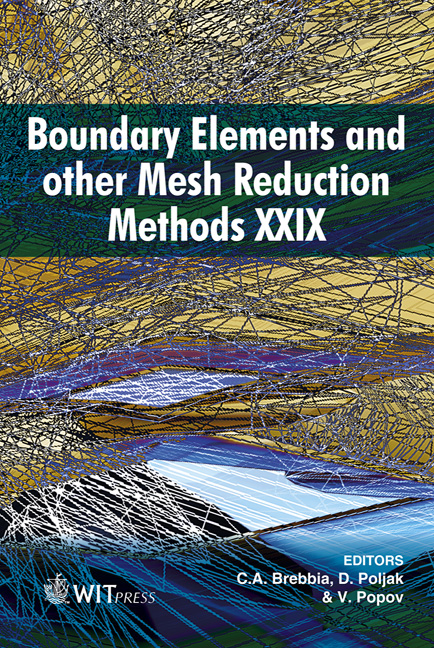Initial Stress Formulation For Three-dimensional Elastoplastic Analysis By The Triple-reciprocity Boundary Element Method
Price
Free (open access)
Transaction
Volume
44
Pages
10
Published
2007
Size
509 kb
Paper DOI
10.2495/BE070031
Copyright
WIT Press
Author(s)
Y. Ochiai
Abstract
In general, internal cells are required to solve elastoplastic problems using a conventional boundary element method (BEM). However, in this case, the merit of BEM, which is ease of data preparation, is lost. Triple-reciprocity BEM can be used to solve two-dimensional elastoplasticity problems with a small plastic deformation. It has been shown that three-dimensional elastoplastic problems can be solved, without the use of internal cells, by the triple-reciprocity BEM and initial strain method. In this study, an initial stress formulation is adopted and the initial stress distribution is interpolated using boundary integral equations. A new computer program was developed and applied to solving several problems. Keywords: elastoplastic problem, initial stress method, BEM. 1 Introduction Elastoplastic problems can be solved by a conventional boundary element method (BEM) using internal cells for domain integrals [1, 2]. In this case, however, the merit of BEM, which is ease of data preparation, is lost. On the other hand, several countermeasures have been considered. Ochiai and Kobayashi proposed the triple-reciprocity BEM (improved multiple-reciprocity BEM) without the use of internal cells for two-dimensional elastoplastic problems using an initial stress and strain formulations [3]. By this method, a highly accurate solution can be obtained using only fundamental solutions of a low order. It has been shown by Ochiai that three-dimensional elastoplastic problems can be solved, without the use of internal cells, by the triple-reciprocity BEM and initial strain method.
Keywords
elastoplastic problem, initial stress method, BEM.





